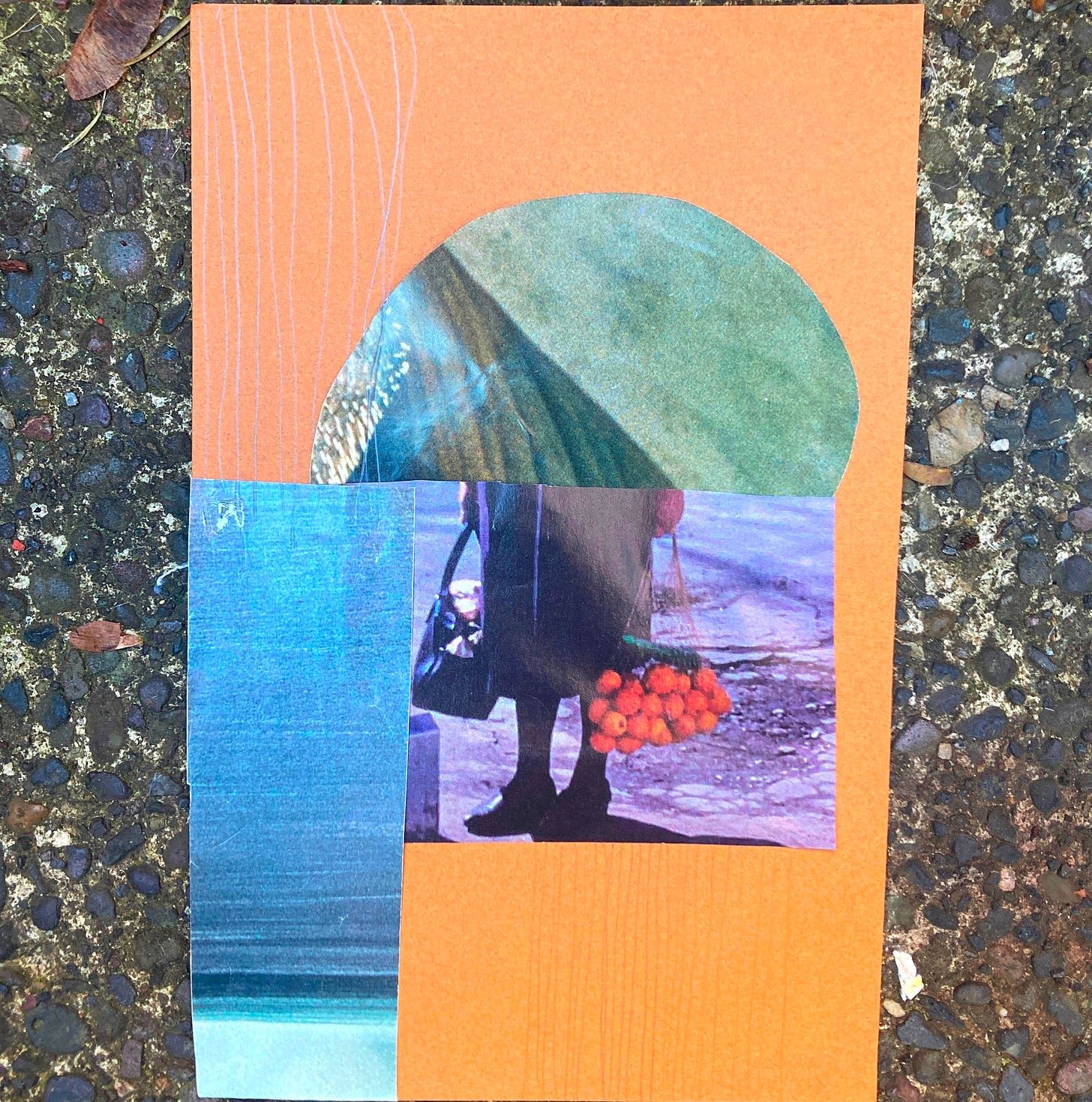Before I share this week’s essay, here’s a reminder that if you are looking for a little support in your artistic practice, I am open for Office Hours, customizable one-on-one time with me. Whether you want to plan a project, learn a skill, or try exercises to get out of a creative rut, I am here for it. Currently booking now through January.

listen for free to the entire essay, read by me, Hope.1
I spent election night gluing bits of paper into a pile, an ever changing composition of texture and color. I worked on four piles at a time, extending past the edges of the first layer, building out out out as the news we feared and suspected leaked into the room.
But I wasn’t alone.
Graciously, a friend invited me to a gathering promising food, a corner for news-watchers, a hot tub, and a room for collage.
I came for the lasagna and stayed for the collage. Okay, I came for the company and stayed when a house full of strangers welcomed me, asked questions, and shared stories.
I met Kirk through collage events, though we have friends in common, I didn’t recognize anyone as I stepped through the door. It felt like a movie where the record screeches to a stop and in the silence, all party goers turn to me, a stranger in a Handsome hat carrying popcorn cookies2. Except it wasn’t like that at all; I was immediately greeted and directed to the kitchen. I may have felt like a weirdo, but I was recognized and welcomed by other weirdos.
I came for the lasagna and stayed for the collage.
The tv room was transformed into a theater with rows of chairs behind a large sectional. Half of the seats were filled, the room somber as the returns rolled in between a blanket of on-screen commentary. The dining room table was heavy with casseroles of every kind, cheese, crackers, cookies, and a layer cake; comfort food in many forms.
From other visits, I knew that the art room was at the top of the stairs, an office with a peaked roof and shelves of communal supplies. Kirk is an effortless host, bubbly with good energy and helpful tips, unfolding chairs while greeting me. He made sure I had a plate of food, encouraged me to help myself to materials, then turned to another guest. I settled into a spot while strangers rotated in and out of the chairs near me. Each introduced themselves, asked my name, and inquired curiously about the sticky piles of paper in front of me. I sat across from a photographer who was making his first collage. I talked with a painter who slowly built a bright and simple work. Folks wandered in and out, with food, or hair damp from the hot tub. Some snuggled and flirted, many caught up on friends and some, like me, listened.
When artists feel that creating is futile, I think of what we share when we grieve: stories, poetry, photographs.
The news from the television downstairs rose up to our art space, carried on the faces peeking in. I left before the election was called, a stack of lumpy collages in my bag.
The next day, my inbox was sprinkled with essays about what to do next. My sister called to check in on me, audibly upset. I reached out to friends, though most of us knew this was a possibility and know that the work for liberation is a long haul. Still, we worried about the immediate potential reactions. I feared for the health and safety of loved ones. And, impossibly, I had a job to do. I was in the middle of writing about new classes I want to teach, and applying for jobs. Like many self-employed artists around me, we wondered, how to do we continue to sell our work and services among this? We’ve been doing it for years, amidst a pandemic, genocide, climate events. How do we make a living while it feels like the world is imploding?
Keep reading with a 7-day free trial
Subscribe to everything is an experiment to keep reading this post and get 7 days of free access to the full post archives.




